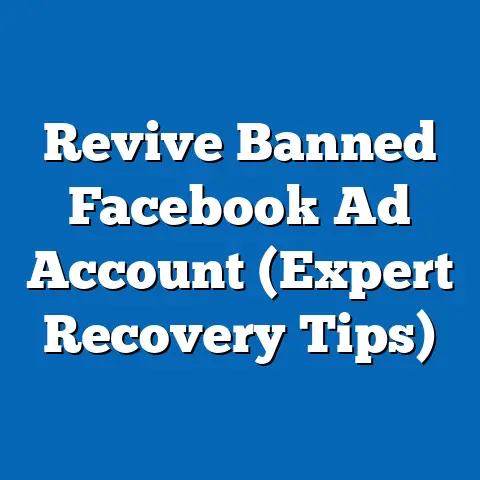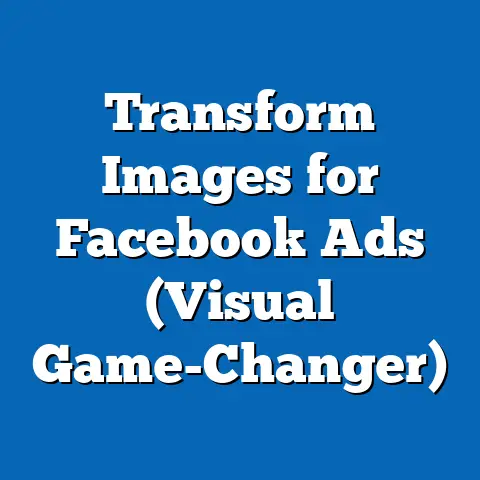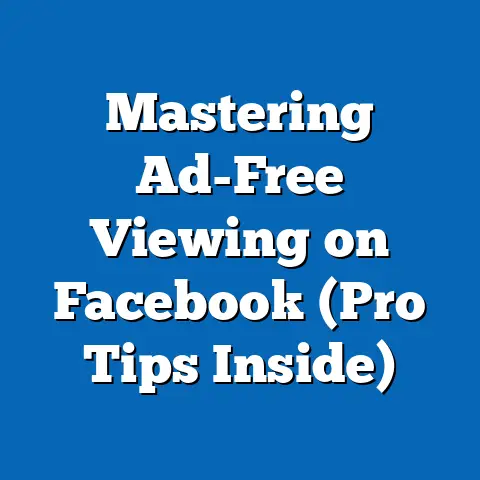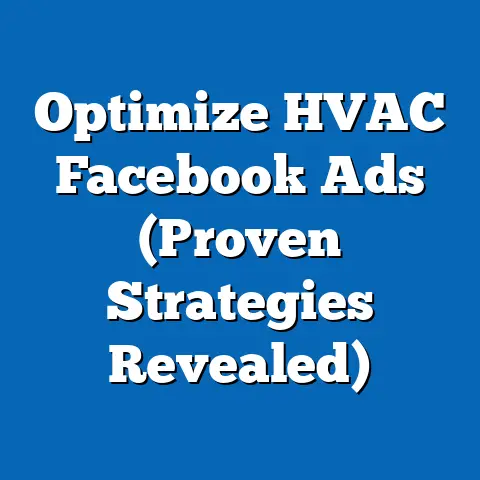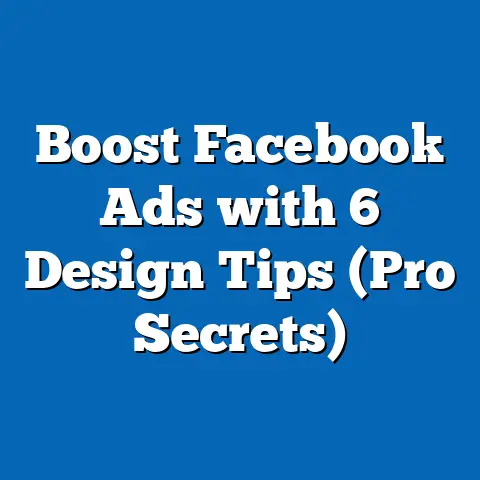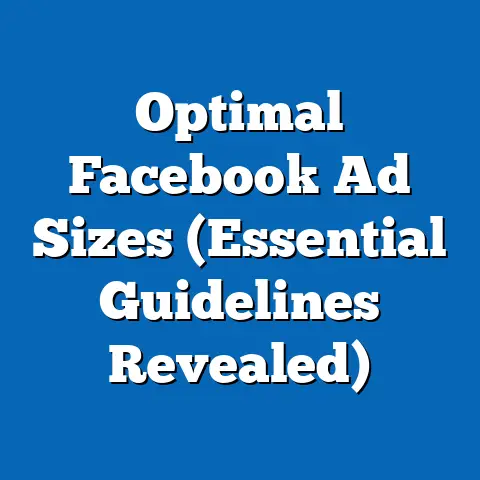Ultimate Facebook Ads for Shopify Dropshipping (Pro Secrets)
Have you ever wondered why some Shopify dropshipping stores seem to skyrocket overnight while others struggle to make their first sale? I’ve seen it happen countless times, and the difference almost always boils down to one thing: effective advertising. And when it comes to reaching a massive audience with laser-like precision, Facebook Ads are still king, especially for Shopify dropshipping businesses. In this guide, I’m going to pull back the curtain and share the pro secrets I’ve learned over years of managing successful Facebook Ads campaigns for dropshippers, secrets that can transform your business and finally get you the sales you deserve.
Understanding the Facebook Ads Landscape
The Facebook advertising ecosystem can seem overwhelming at first glance. It’s a complex machine with countless levers and dials, but once you understand the fundamentals, it becomes an incredibly powerful tool. Facebook, or Meta as it’s now known, isn’t just a social network; it’s a massive data powerhouse. They know their users inside and out – their interests, their demographics, their behaviors, and even their purchase intent. This wealth of data is what makes Facebook Ads so effective.
For ecommerce, and particularly for Shopify dropshipping, Facebook is a goldmine. It allows you to target your ideal customers with incredible accuracy, showing them your products at the exact moment they’re most likely to buy. Think about it: you’re not just throwing your product out there and hoping someone bites. You’re carefully selecting who sees your ad based on their likelihood of being interested.
Why Facebook is Significant for Dropshipping:
- Massive Reach: Facebook boasts billions of active users, ensuring you can reach a vast audience.
- Granular Targeting: Target users based on demographics, interests, behaviors, and more.
- Scalability: Easily scale your campaigns as your business grows.
- Measurable Results: Track your ad performance with detailed analytics and optimize accordingly.
Current Statistics (as of late 2023/early 2024):
- Facebook has nearly 3 billion monthly active users (Statista).
- The average Facebook user clicks on 12 ads per month (Hootsuite).
- Ecommerce is the fastest-growing advertising category on Facebook (Meta Earnings Reports).
- Businesses see an average of $4.32 in revenue for every $1 spent on Facebook ads (HubSpot).
These numbers aren’t just figures on a page; they represent real potential for your dropshipping business. But to tap into that potential, you need to lay the groundwork.
Key Takeaway: Facebook is a powerful advertising platform for dropshipping due to its massive reach, granular targeting, and measurable results. Understand the landscape and you’re already a step ahead.
Setting Up Your Facebook Ads for Success
Before you even think about creating your first ad, you need to set up the foundation for success. This means creating a Facebook Business Manager account and, crucially, installing the Facebook Pixel on your Shopify store.
1. Facebook Business Manager:
Think of Business Manager as the central hub for all your Facebook advertising activities. It allows you to manage your ad accounts, pages, and team members in one place.
- How to create a Business Manager:
- Go to business.facebook.com and click “Create Account.”
- Follow the prompts to enter your business information.
- Claim your Facebook page and create an ad account.
- Go to business.facebook.com and click “Create Account.”
- Follow the prompts to enter your business information.
- Claim your Facebook page and create an ad account.
2. The All-Important Facebook Pixel:
The Facebook Pixel is a small snippet of code that you place on your Shopify store. It’s like a tiny spy that tracks the actions visitors take on your website, such as viewing products, adding items to their cart, and making purchases. This data is invaluable for optimizing your ad campaigns.
-
Why is the Pixel so important?
- Conversion Tracking: See which ads are driving the most sales.
- Retargeting: Show ads to people who have already visited your website.
- Lookalike Audiences: Find new customers who are similar to your existing ones.
- Optimized Ad Delivery: Facebook uses Pixel data to show your ads to people who are most likely to convert.
-
Installing the Facebook Pixel on Shopify:
- In your Facebook Business Manager, go to “Events Manager” and create a new Pixel.
- Follow the instructions to install the Pixel manually or use the Shopify integration.
- Verify that the Pixel is tracking events correctly using the Facebook Pixel Helper Chrome extension.
Why is the Pixel so important?
- Conversion Tracking: See which ads are driving the most sales.
- Retargeting: Show ads to people who have already visited your website.
- Lookalike Audiences: Find new customers who are similar to your existing ones.
- Optimized Ad Delivery: Facebook uses Pixel data to show your ads to people who are most likely to convert.
Installing the Facebook Pixel on Shopify:
- In your Facebook Business Manager, go to “Events Manager” and create a new Pixel.
- Follow the instructions to install the Pixel manually or use the Shopify integration.
- Verify that the Pixel is tracking events correctly using the Facebook Pixel Helper Chrome extension.
I can’t stress enough how important the Pixel is. I’ve seen countless dropshippers skip this step, and they’re essentially flying blind. Without the Pixel, you’re just guessing what’s working and what’s not.
Pro Tip: Make sure you set up standard events in your Pixel, such as “ViewContent,” “AddToCart,” and “Purchase.” This will give you a much clearer picture of your customer’s journey.
Key Takeaway: Setting up Business Manager and installing the Facebook Pixel are essential for tracking conversions, retargeting, and optimizing your ad campaigns. Don’t skip these steps!
Targeting Your Ideal Audience
Now that you have your foundation in place, it’s time to start thinking about who you want to see your ads. Facebook offers a wide range of targeting options, allowing you to reach your ideal customer with incredible precision.
1. Core Audiences:
These are the basic targeting options that Facebook provides, based on demographics, interests, and behaviors.
- Demographics: Target users based on age, gender, location, education, job title, and more.
- Interests: Target users based on their hobbies, interests, and the pages they like on Facebook.
- Behaviors: Target users based on their purchase history, device usage, and other online behaviors.
2. Custom Audiences:
This is where things get really interesting. Custom audiences allow you to target people who have already interacted with your business, such as:
- Website Visitors: Target people who have visited your website (using the Facebook Pixel).
- Customer Lists: Upload a list of your existing customers to target them on Facebook.
- Engagers: Target people who have interacted with your Facebook page or ads.
3. Lookalike Audiences:
Lookalike audiences are one of the most powerful targeting options on Facebook. They allow you to find new customers who are similar to your existing ones.
- How they work: You provide Facebook with a “seed audience” (e.g., your customer list or website visitors), and Facebook will find new users who share similar characteristics.
- Why they’re effective: They allow you to scale your reach to people who are highly likely to be interested in your products.
Conducting Audience Research:
Before you start targeting, it’s crucial to do your research. Understand your ideal customer – their demographics, their interests, their pain points, and their aspirations.
- Use Facebook Audience Insights: This tool provides valuable insights into the demographics, interests, and behaviors of your target audience.
- Analyze your existing customer data: Look for patterns and trends in your customer demographics and purchase history.
- Research your competitors: See who they’re targeting and what kind of ads they’re running.
I remember when I was working with a dropshipping store that sold yoga mats. Initially, we were just targeting people interested in “yoga.” But after doing some research, we discovered that our ideal customer was also interested in “meditation,” “mindfulness,” and “healthy eating.” By expanding our targeting, we saw a significant increase in our ad performance.
Key Takeaway: Understanding your audience and using the right targeting options are critical for reaching the right people and driving conversions. Don’t be afraid to experiment and refine your targeting over time.
Crafting Compelling Ad Creatives
Targeting is only half the battle. Once you’ve found your ideal audience, you need to capture their attention with compelling ad creatives. This means creating ads that are visually appealing, engaging, and relevant to your target audience.
1. Ad Formats:
Facebook offers a variety of ad formats, each with its own strengths and weaknesses.
- Image Ads: Simple and straightforward, ideal for showcasing a single product.
- Video Ads: Highly engaging, perfect for telling a story or demonstrating a product in action.
- Carousel Ads: Allow you to showcase multiple products in a single ad.
- Slideshow Ads: A cost-effective way to create engaging video-like experiences.
- Collection Ads: Designed for mobile shopping, allow users to browse and purchase products directly from the ad.
2. High-Converting Ad Copy:
Your ad copy should be clear, concise, and persuasive. It should highlight the benefits of your product and address the pain points of your target audience.
- Use strong headlines: Grab the reader’s attention with a compelling headline.
- Highlight the benefits: Focus on what your product can do for the customer.
- Use social proof: Include testimonials or reviews to build trust.
- Create a sense of urgency: Encourage users to take action now with limited-time offers.
3. Visually Appealing Visuals:
Your ad visuals should be high-quality and relevant to your product. Use professional photography or video that showcases your product in its best light.
- Use eye-catching colors and images: Make your ads stand out from the crowd.
- Show your product in action: Demonstrate how your product solves a problem or improves the customer’s life.
- Use lifestyle imagery: Show your product being used in a real-world setting.
Examples of Successful Ad Creatives:
- Example 1 (Video Ad): A short video demonstrating a unique kitchen gadget, highlighting its ease of use and time-saving benefits. The ad copy includes a limited-time discount and a call to action to “Shop Now.”
- Example 2 (Carousel Ad): A carousel ad showcasing a collection of summer dresses, with each slide featuring a different dress and a link to purchase. The ad copy highlights the latest trends and offers free shipping.
- Example 3 (Image Ad): A high-quality image of a stylish backpack, with the ad copy highlighting its durability, comfort, and storage capacity. The ad includes a customer testimonial and a call to action to “Learn More.”
I’ve found that video ads tend to perform particularly well for dropshipping products, especially if you can create a video that demonstrates the product’s unique selling points.
Key Takeaway: Compelling ad creatives are essential for capturing the attention of your target audience and driving conversions. Experiment with different ad formats, copy, and visuals to find what works best for your products.
Budgeting and Bidding Strategies
Now that you have your targeting and ad creatives in place, it’s time to talk about money. Setting an advertising budget and choosing the right bidding strategy are crucial for maximizing your ROI.
1. Setting Your Budget:
There’s no one-size-fits-all answer to how much you should spend on Facebook ads. It depends on your business goals, your target audience, and your product margins.
- Start small: Begin with a small budget and gradually increase it as you see results.
- Consider your cost per acquisition (CPA): How much are you willing to spend to acquire a new customer?
- Factor in your product margins: Make sure you’re making a profit after accounting for your ad spend.
2. Bidding Strategies:
Facebook offers several bidding strategies, each with its own advantages and disadvantages.
- Cost Per Click (CPC): You pay each time someone clicks on your ad. This is a good option for driving traffic to your website.
- Cost Per Mille (CPM): You pay for every 1,000 impressions your ad receives. This is a good option for increasing brand awareness.
- Cost Per Acquisition (CPA): You pay each time someone takes a specific action, such as making a purchase. This is a good option for maximizing your ROI.
3. A/B Testing:
A/B testing is the process of testing different versions of your ads to see which performs best. This is a crucial part of optimizing your ad spend.
- Test different ad creatives: Try different headlines, images, and copy.
- Test different targeting options: Experiment with different demographics, interests, and behaviors.
- Test different bidding strategies: See which bidding strategy delivers the best results.
4. Scaling Successful Campaigns:
Once you’ve found a winning campaign, you’ll want to scale it to reach a larger audience. However, be careful not to scale too quickly, as this can lead to increased costs and decreased performance.
- Gradually increase your budget: Increase your budget by small increments over time.
- Expand your targeting: Try targeting new audiences that are similar to your existing ones.
- Monitor your performance closely: Keep a close eye on your key metrics and make adjustments as needed.
I’ve seen dropshippers make the mistake of scaling their campaigns too quickly, only to see their ROI plummet. It’s important to be patient and methodical when scaling your campaigns.
Key Takeaway: Setting a realistic budget, choosing the right bidding strategy, and A/B testing are crucial for maximizing your ROI on Facebook ads.
Analyzing and Optimizing Ad Performance
Your work doesn’t end once you’ve launched your campaigns. In fact, that’s when the real work begins. You need to constantly analyze your ad performance and make adjustments to optimize your results.
1. Key Performance Indicators (KPIs):
These are the metrics you should be monitoring to track the performance of your ads.
- Click-Through Rate (CTR): The percentage of people who see your ad and click on it.
- Conversion Rate: The percentage of people who click on your ad and make a purchase.
- Cost Per Acquisition (CPA): The cost of acquiring a new customer.
- Return on Ad Spend (ROAS): The revenue you generate for every dollar you spend on ads.
2. Interpreting Facebook Ads Manager Data:
Facebook Ads Manager provides a wealth of data about your ad performance. Learn how to interpret this data to make informed decisions about your campaigns.
- Identify underperforming ads: Which ads have a low CTR or conversion rate?
- Identify successful ads: Which ads have a high CTR or conversion rate?
- Analyze your audience demographics: Which demographics are most responsive to your ads?
3. Optimization Techniques:
Based on your analysis, you can make adjustments to your campaigns to improve their performance.
- Pause underperforming ads: Stop running ads that aren’t delivering results.
- Refine your targeting: Experiment with different demographics, interests, and behaviors.
- Improve your ad creatives: Try different headlines, images, and copy.
- Adjust your bidding strategy: See if a different bidding strategy delivers better results.
I always recommend setting up custom reports in Facebook Ads Manager to track the KPIs that are most important to your business. This will make it much easier to monitor your performance and identify areas for improvement.
Key Takeaway: Analyzing and optimizing your ad performance is an ongoing process. By monitoring your KPIs and making adjustments to your campaigns, you can continuously improve your results.
Leveraging Retargeting Techniques
Retargeting is one of the most powerful tools in the Facebook Ads arsenal, especially for dropshipping. It allows you to show ads to people who have already interacted with your business, such as website visitors, cart abandoners, and previous customers.
1. Why Retargeting is Important:
- Increases Brand Awareness: Keeps your brand top-of-mind.
- Drives Conversions: Reminds potential customers about products they were interested in.
- Improves Customer Loyalty: Encourages repeat purchases from existing customers.
2. Types of Retargeting Campaigns:
- Website Visitors: Show ads to people who have visited your website but haven’t made a purchase.
- Cart Abandoners: Show ads to people who have added items to their cart but haven’t completed the checkout process.
- Previous Customers: Show ads to people who have already purchased from you, promoting new products or special offers.
3. Crafting Tailored Messages:
The key to successful retargeting is to craft messages that are relevant to the specific audience you’re targeting.
- Website Visitors: Remind them about the products they viewed and offer a discount.
- Cart Abandoners: Offer free shipping or a small discount to encourage them to complete their purchase.
- Previous Customers: Promote new products that are similar to what they’ve purchased before.
Example:
Let’s say someone visits your Shopify store and looks at a specific pair of running shoes but doesn’t add them to their cart. A retargeting ad could show them that exact pair of running shoes with a headline like, “Still thinking about those running shoes? Get them now with free shipping!” This personalized approach is far more effective than a generic ad.
Key Takeaway: Retargeting is a powerful way to re-engage potential customers and drive conversions. Craft tailored messages for each audience segment to maximize your results.
Staying Ahead of the Competition
The Facebook Ads landscape is constantly evolving. New features are released, algorithms change, and best practices shift. To stay ahead of the competition, you need to be a lifelong learner and constantly experiment with new strategies.
1. Trends in Facebook Advertising:
- Video Marketing: Video is becoming increasingly important on Facebook.
- Personalization: Customers expect personalized experiences.
- Mobile Optimization: Most Facebook users access the platform on their mobile devices.
- AI and Automation: Facebook is using AI to automate many aspects of advertising.
2. Continuous Learning:
- Read industry blogs and publications: Stay up-to-date on the latest trends and best practices.
- Attend webinars and conferences: Learn from industry experts and network with other marketers.
- Take online courses: Deepen your knowledge of Facebook advertising.
3. Resources for Staying Updated:
- Facebook Business Help Center: The official resource for all things Facebook advertising.
- Industry Blogs: Sites like Social Media Examiner, AdEspresso, and Jon Loomer Digital.
- Facebook Ads Communities: Join Facebook groups and forums to connect with other advertisers.
I make it a point to dedicate time each week to learning about new Facebook Ads features and strategies. It’s an investment that pays off in the long run.
Key Takeaway: Staying ahead of the competition requires continuous learning and experimentation. Be open to new ideas and adapt to the ever-changing Facebook Ads landscape.
Conclusion
Mastering Facebook Ads is no longer optional for Shopify dropshipping businesses; it’s essential. By understanding the platform, setting up your account correctly, targeting the right audience, crafting compelling ad creatives, managing your budget effectively, and continuously optimizing your campaigns, you can unlock the full potential of Facebook advertising and drive significant growth for your business.
I’ve shared with you the pro secrets that I’ve learned over years of managing successful Facebook Ads campaigns for dropshippers. Now, it’s your turn to put these secrets into action. Implement these strategies, experiment with different approaches, and track your results. With dedication and persistence, you can transform your Shopify dropshipping business and finally achieve the success you deserve. So, go out there and start creating some amazing Facebook Ads!

